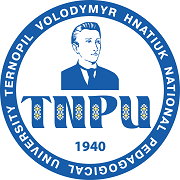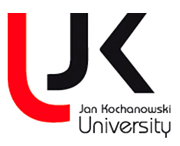INTERACTION OF TEXT AND PARATEXT IN TRANSLATION (BASED ON THE COLLECTION OF WORKS «THE SILMARILLION» BY J.R.R. TOLKIEN)
DOI:
https://doi.org/10.32782/2307-1222.2025-59-3Keywords:
diacritical mark, English-Ukrainian translation, epitext, paratext, paratranslation, peritext, text, translation studiesAbstract
The article examines the interaction between text and paratextual representations in J.R.R. Tolkien’s English-language edition of “The Silmarillion” and its Ukrainian translation. The research briefly addresses paratextual terminology: distinguishing between “peritext” and “paratext”; explaining the term “paratextual form” and articulating its difference from the so-called “invisible forms” from K. Jackson’s perspective.The materials place significant emphasis on the temporal nature of paratext, particularly focusing on the layering of extra-textual forms observed through subsequent editions of the characterized collection of works.The translation study represents differences between the “Foreword” to the 1977 edition and the “Preface to the Second Edition” from 1999, both created by the editor Christopher Tolkien. It documents the connection between paratextual materials that typographically appear in preposition to the text and those placed in postposition.Among other aspects, the role of epistolary as an information source is examined, contributing to deeper knowledge about the book and the author’s intentions in creating it, which have a compensatory nature and thus aim to fill folkloric gaps in England’s literary tradition. Following the writer’s lead, the linguistic features of the collection are emphasized. The analysis of J.R.R. Tolkien’s 1951 letter to then-Collins editor M. Waldman emphasizes the letter’s changing status as potentially belonging to either epitext or peritext.The article places exceptional focus on post-textual manifestations of paratext, specifically notes on consonant and vowel pronunciation (which are extraordinary forms in publications) and indexes of proper names. Analysis of the appendices reproduced in translation reveals traces of interventions that are not additionally commented upon. Such interventions are interpreted as adaptation-driven. Additionally, differences in the presentation of various diacritical marks, which serve as decorative and stylistic markers, are noted between the source language edition and the target language. A brief analysis of glyphs from linguistic-historical positions is conducted.
References
Роттердамський Е. Похвала Глупоті. Домашні Бесіди / перекл. з латини В. Литвинова, Й. Кобова. Київ : Основи, 1993.
Толкін Дж. Р.Р. Сильмариліон / за ред. К. Толкіна ; пер. К. Оніщук. 2-ге, опрацьоване вид. Львів : Видавництво «Астролябія», 2014. 576 с.
Ball M. J., Müller N., Klopfenstein M., Rutter B. My client is using non-English sounds! A tutorial in advanced phonetic transcription. Part II: Vowels and diacritics.
Contemporary Issues in Communication Science and Disorders, 37, 103–110, 2010.
Cambridge Dictionary. Once in a Blue Moon: English Meaning. URL: https://dictionary.cambridge.org/dictionary/english/once-in-a-bluemoon?q=ONCE+IN+A+BLUE+MOON (дата звернення: 20.11.2024).
Genette G. Seuils. Париж : Seuil, Coll. Poétique, 1987.
Grupo de Investigación Traducción & Paratraducción. Grupo de Investigación Traducción & Paratraducción. URL: https://paratraduccion.com/doctorado/grupo-deinvestigacion-tp/ (дата звернення: 28.01.2025).
Hornby A.S. Oxford Advanced Learner’s Dictionary. 8th ed. / J. Turnbull, (Ed.- in-Chief), D. Lea, (Ed.), M. Ashby, P. Phillips, B. Francis, S. Webb, & V. Bull (Eds.). Oxford University Press, 2010.
Jackson K. Invisible Forms: A Guide to Literary Curiosities. New York : St. Martin’s Press, 1999.
Lewis A. Historical Bias in the Making of The Silmarillion. Mythlore: A Journal of J.R.R. Tolkien, C.S. Lewis, Charles Williams, and Mythopoeic Literature, 21(2), Article 25, 1996. URL: https://dc.swosu.edu/mythlore/vol21/iss2/25 (дата звернення: 8.10.2024).
Piolat A., Roussey J.-Y., Thunin O. Effects of screen presentation on text reading and revising. Int. J. Human-Computer Studies, 47, 565–589, 1997.
Shelly M. The Power of Females and Femininity in The Silmarillion. Line by Line: A Journal of Beginning Student Writing, 8(1), Article 5, 2022. URL: https://ecommons.udayton.edu/lxl/vol8/iss1/5 (Дата звернення: 19.11.2024).
Sweet H. The Student’s Dictionary of Anglo-Saxon. London : The Macmillan Company, 1897.
Tolkien J.R.R., Carpenter H., Tolkien C. (Eds.). The Letters of J.R.R. Tolkien. London : George Allen and Unwin, 1981.
Wittenberg K.A. The Silmarillion: An Examination of Secondary Belief in Tolkien’s Seminal Fantasy Mythos. WWU Honors Program Senior Projects, 340, 2019. URL: https://cedar.wwu.edu/wwu_honors/340 (дата звернення: 12.11.2024).
Wyatt A.J. (ed.). Beowulf: Edited with textual foot-notes, index of proper names, and alphabetical glossary. Cambridge University Press, 1894.










